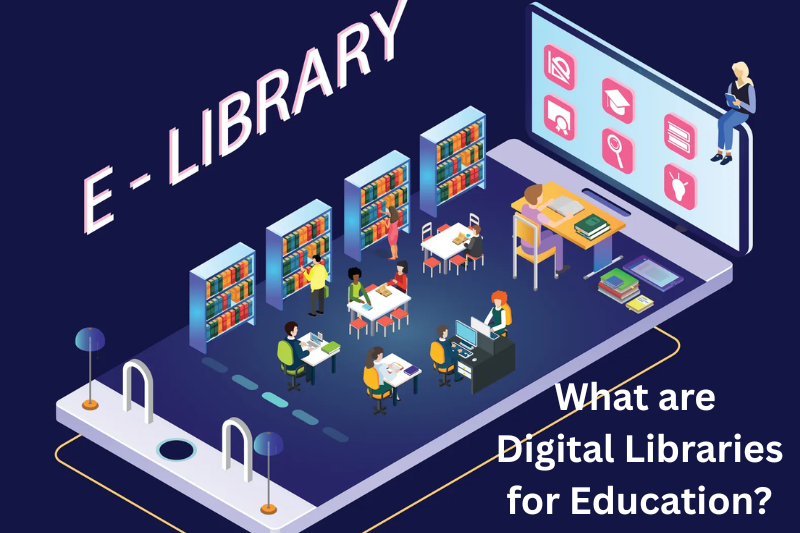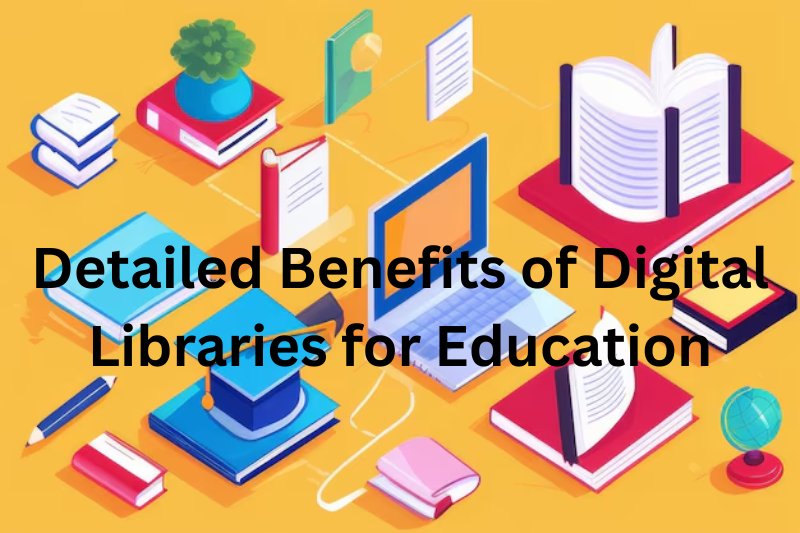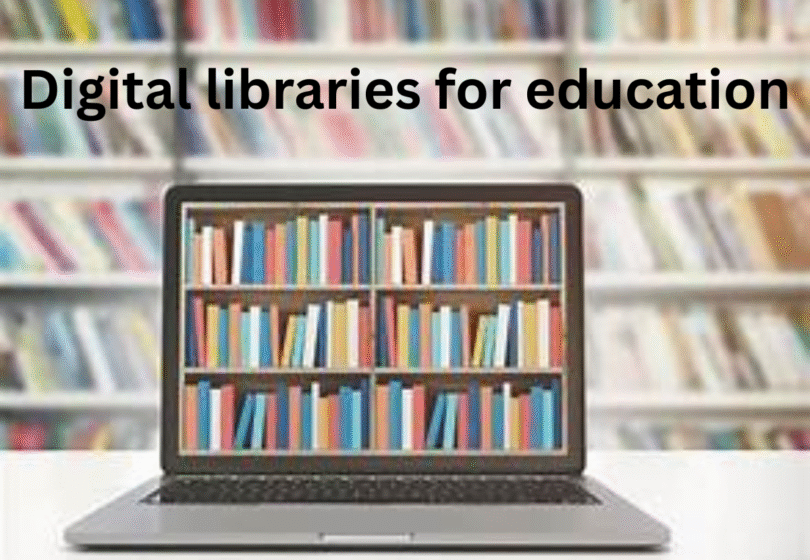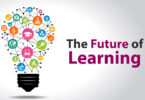Think back to a time when visiting a library meant traveling across town, hunting through shelves, and hoping the book you needed wasn’t already checked out. Now imagine having an entire library’s worth of knowledge in your pocket, accessible 24/7 from anywhere in the world. That’s exactly what digital libraries for education have made possible.
In this digital era, where everything is becoming virtual, the education sector is rapidly adopting digital libraries to enhance learning experiences. They are not just a convenience; they are a necessity for students, teachers, researchers, and even casual learners.
Let’s explore how digital libraries are transforming education, their key benefits, possible challenges, and why they are a crucial part of future learning.
What are Digital Libraries for Education?

A digital library for education is an online platform where educational content is stored, organized, and made accessible to users over the internet. These platforms contain:
- eBooks
- Academic journals
- Research papers
- Video tutorials
- Audio lectures
- Infographics
- Historical documents
- Interactive learning resources
Unlike physical libraries where resources are limited by space and availability, digital libraries are unlimited in scope and can be accessed simultaneously by millions of users.
Popular examples of educational digital libraries include:
- Google Scholar: For academic research papers and articles.
- JSTOR: A vast repository of scholarly journals.
- Project Gutenberg: Over 60,000 free eBooks.
- Khan Academy Library: Video tutorials and learning resources for students.
- National Digital Library of Pakistan (NDLP): Providing access to scientific journals and research materials.
How Digital Libraries Are Changing Education
Digital libraries are revolutionizing education by making learning borderless, flexible, and more inclusive. Students no longer have to rely solely on classroom lectures or physical books. Whether you’re preparing for exams, working on a research paper, or simply expanding your knowledge, a digital library gives you instant access to a world of information.
Educational institutions are increasingly integrating digital libraries with their Learning Management Systems (LMS), allowing students to download course materials, access recommended readings, and even participate in virtual discussions.
Detailed Benefits of Digital Libraries for Education

1. 24/7 Access to Knowledge
One of the standout advantages is round-the-clock availability. Students from different time zones, working professionals, and night owls can study at their convenience without worrying about library hours.
2. Global Learning Resources
Digital libraries break geographical barriers. A student in a remote village can access the same scholarly articles from Harvard or Oxford as a student in a metropolitan city. This democratizes education and promotes equal learning opportunities.
3. Instant Search & Retrieval
Remember flipping through countless pages just to find a small paragraph? Digital libraries allow you to search for keywords, authors, subjects, or even specific phrases, making research and study much faster and more efficient.
4. Cost-Effective Learning Solution
Many digital libraries offer free access, while others are significantly more affordable compared to buying physical textbooks or subscribing to journals. This is a huge financial relief for students and educational institutions.
5. Supports Various Learning Styles
Not everyone learns the same way. Some prefer reading, while others grasp concepts better through videos or audio. Digital libraries cater to visual, auditory, and kinesthetic learners by offering a variety of content formats.
6. No Physical Limitations
Unlike traditional libraries with limited space, digital libraries can store millions of documents without needing extra physical space. There’s no “out of stock” situation — resources are available to multiple users simultaneously.
7. Interactive & Multimedia Enhancements
Many modern digital libraries integrate interactive content like simulations, quizzes, and video lectures that make learning more engaging and effective compared to plain text materials.
8. Environmentally Friendly
By reducing the need for paper, ink, and physical storage, digital libraries contribute to a greener planet, supporting sustainability efforts in education.
You may also like to read these posts:
Educational Technology Trends: The Complete Guide to The Future of Learning
Best EdTech Tools 2025 – Your Ultimate Guide to Smarter Learning!
Online Learning Platforms: The Future of Education You Can Start Today
Technology in Classrooms: A Complete Guide to Modern Learning
Detailed Drawbacks of Digital Libraries for Education
1. Digital Divide & Accessibility Issues
Not all students have access to high-speed internet or digital devices. In developing regions, this creates a gap between students who can benefit from digital libraries and those who can’t.
2. Screen Time Fatigue
Prolonged screen exposure can cause eye strain, headaches, and fatigue. Unlike physical books, reading on digital devices lacks the tactile engagement some learners prefer.
3. Technical Difficulties
Sometimes, users face challenges such as:
- Website downtimes
- File compatibility issues (PDFs, EPUBs, etc.)
- Navigational difficulties for non-tech-savvy users
4. Copyright & Licensing Limitations
Certain academic journals or books are locked behind paywalls or institutional logins. Not all resources in a digital library are free, which can limit access for independent learners.
5. Reduced Social Interaction
Traditional libraries often serve as community hubs where students can collaborate, discuss, and exchange ideas. Digital libraries, being solitary in nature, may lack this face-to-face engagement.
6. Over-Reliance on Technology
Technical failures such as server crashes, cyber-attacks, or data loss can disrupt access to digital libraries, which is not a concern in physical libraries.
Why Digital Libraries Are the Future of Education
Despite their challenges, the advantages of digital libraries for education are undeniable. They are becoming an integral part of educational ecosystems, supporting:
- Blended Learning Models (combining in-person and online learning)
- Remote Education Initiatives
- Research and Innovation
- Lifelong Learning & Professional Development
With continuous improvements in technology, digital libraries are getting more user-friendly, interactive, and accessible, ensuring they remain at the heart of future educational strategies.
Conclusion
To sum up, digital libraries for education are reshaping how we access, consume, and share knowledge. They offer unprecedented convenience, vast learning resources, and innovative content delivery methods that fit the demands of modern learners. While they come with certain challenges like digital accessibility and screen fatigue, their benefits — such as 24/7 access, cost-effectiveness, and global reach — make them indispensable in today’s education landscape.
As technology advances and educational institutions continue to embrace digital solutions, digital libraries will play a pivotal role in ensuring education is inclusive, interactive, and future-ready.
FAQs
Q1: What is a digital library for education?
Q2: Are digital libraries free to use?
Q3: How can digital libraries benefit students?
24/7 access to educational resources.
Instant searchability for specific topics.
A wide variety of content formats like videos and audios.
Cost-effective alternatives to physical textbooks.
Access to global academic resources.
Q4: Can digital libraries replace traditional libraries?
Q5: What devices are needed to access a digital library?
Smartphones
Tablets
Laptops
Desktop computers
An internet connection is typically required, although some platforms offer offline download options.







